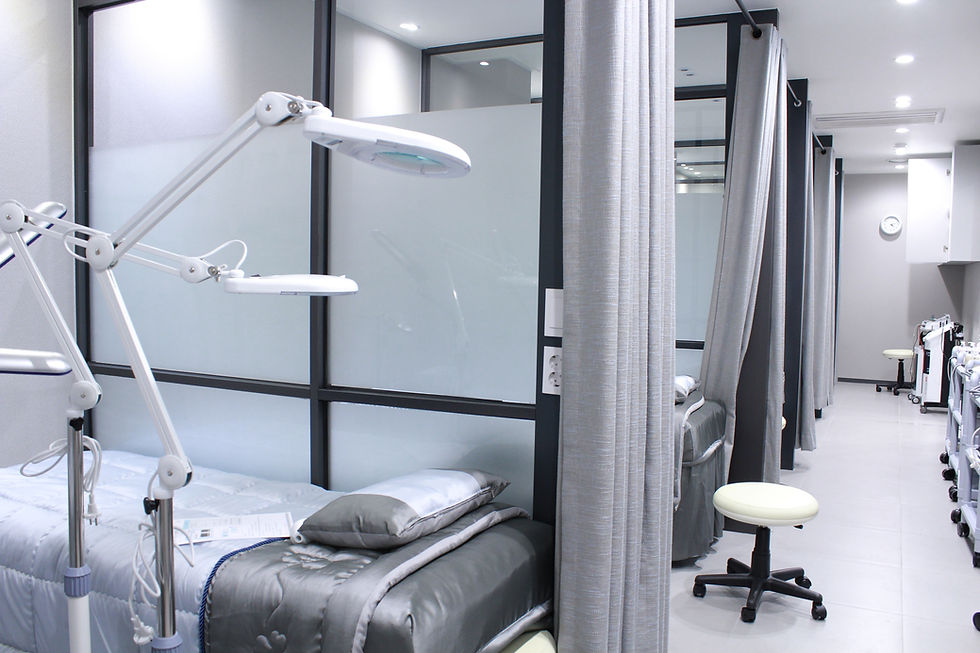The Future of Personalized Healthcare: From Data Abundance to Proactive Treatments

Imagine a world where healthcare is not a one-size-fits-all approach. A world where treatments are tailor-made to you. Crafted to suit your unique genetic make-up, lifestyle, and health history. Well, that world is not a far-off fantasy anymore; it is the dawn of Personalized Healthcare (PHC).
The concept of PHC revolves around the provision of medical care. Which considers an individual's unique health profile. It harnesses the wealth of data each one of us possesses. From our genome sequences to our everyday lifestyle habits. It is like switching from a generalized weather forecast. To one that predicts the exact rainfall in your backyard.
Our current healthcare system, though advanced, still runs on a reactive model. It is akin to putting out fires; we wait for symptoms to show up and then rush to treat them. PHC, so, is set to revolutionize this model. Shifting from reactionary to preventative care, from generic to individualized treatments. It is about predicting the rain and preparing for it beforehand.
So, what are the driving forces behind this transformation in healthcare? The future of PHC rests on four fundamental pillars. These are:
Abundance of Data: This is the raw material of PHC. With advances in technology. We can now accumulate an unimaginable amount of health-related data. Right from genomic data to the minutiae of our daily activity levels.
Connected Tools and Data: Data alone will not do the trick. What we need is a way to connect these diverse data points to build a comprehensive health profile. This is where interconnected health apps and electronic health records come into play.
Widespread Automation: To sift through this enormous pile of data. And derive meaningful insights requires intelligent automation. Thanks to Artificial Intelligence (AI) and Machine Learning (ML). The laborious task of analysing complex data is becoming seamless.
Proactive Treatment: All the data and connections culminate in proactive, preventive care. This means identifying health risks early on. Intervening before any significant problem arises.
Take an example from real life. Let us say. Someone has a genetic predisposition for diabetes, identified through genomics data. Their wearable device records a slight increase in blood sugar levels over a few weeks. Connected systems recognize this trend and alert the healthcare provider. An automated analysis suggests an alteration in diet. And lifestyle to reduce the risk. This proactive approach could prevent the onset of full-blown diabetes.

The future of personalized healthcare is promising and transformative. It is about making the shift from mass healthcare to a more individualized approach. From reactive to proactive treatment. It is about painting a detailed health picture for everyone. And empowering them with informed healthcare choices. The journey is beginning. And it will change the way we perceive and experience healthcare.
Abundance of Data: The Key to Personalized Healthcare
Imagine having the equal of a personal librarian. Who knows every single book, article, and blog post you have ever read. Now, imagine that instead of reading material. This librarian has access to every data point related to your health. Over your entire lifetime. Overwhelming, isn't it? Yet, this is the reality into which we are stepping. With the plenty of data in personalized healthcare.
Data Abundance, a term that reflects the explosive growth of data generation. Has revolutionized many sectors, with healthcare being one of the most affected. We are no longer limited to sporadic and fragmented pieces of health data. Instead, we are amassing a data library, vast and rich. Comprising our genetic information, lifestyle habits, medical histories, and much more.
Data in healthcare comes from a variety of sources:
Genetic Data: Genomic sequencing, once a high-cost, time-consuming process. Is now much more accessible. With this, we can understand. An individual's genetic predisposition to certain diseases or conditions.
Electronic Health Records (EHRs): These digital versions of our health and treatment histories. Offer invaluable longitudinal insights into our health.
Wearables and Health Apps: Devices like fitness bands, smartwatches, and health apps. Track our vital statistics and lifestyle habits. Creating a continual stream of real-time health data.
Lab Tests and Medical Imaging: Routine screenings, blood tests, and diagnostic imaging. Contribute to our health data portfolio.
Social Determinants: Data about our socio-economic status, education, physical environment. And more also plays a role in our health picture.
With such an abundance of data, we can create a detailed and dynamic health profile for everyone. But the question is, how do we make sense of this massive pool of information?

Here's where AI and machine learning technologies play a crucial role. They enable us to analyse, interpret. And draw meaningful conclusions from complex data sets. AI can spot patterns and trends that human analysts might miss. Machine learning algorithms can learn and adapt over time, improving their predictive power.
A notable example of this in action is the groundbreaking work undertaken by Tempus. A technology company focused on personalized medicine. Tempus has built an extensive library of molecular and clinical data. And an operating system to make that data useful. They use AI to analyse this data. Enabling physicians to make real-time, data-driven decisions. Their work has especially been transformative in oncology. Helping tailor treatments to individual patients' genetic make-up and disease profile.
Google's DeepMind has made strides in leveraging data abundance for healthcare. Its AI algorithms can analyse retinal scans to detect early signs of. Age-related macular degeneration. Diabetic retinopathy, conditions that could lead to blindness if not treated early.
Data abundance is the fuel for the personalized healthcare engine. The wealth of information available to us today. Is enabling us to move away from broad-spectrum healthcare. Towards a more individualized approach. By harnessing this data and using AI and machine learning to analyse it. We can not only understand individual health risks better. But also create tailored interventions that improve health outcomes. This data-driven revolution in healthcare is the beginning. Its potential to transform our health experiences is exciting.

Connected Tools and Data: Ensuring Accurate Diagnoses and Effective Treatments
Consider the game of connect-the-dots. The fun lies in joining various points to unravel an image that was not clear at first. Now, apply this analogy to personalized healthcare (PHC). The dots are the diverse health data points, and the image – a comprehensive health profile. The act of connecting these dots? It is the pivotal role played by 'Connected Tools and Data'.
In PHC, health data is being collected from a multitude of sources. From genetic data and Electronic Health Records (EHRs). Data from wearables and social determinants. These diverse data sets offer a wealth of information about our health. Yet, the true power of this data is being unlocked only when these disparate pieces are connected., integrated, and made to communicate with each other.
So why is this connectivity so crucial?
It provides a holistic view of the patient's health. A person's health is not determined by isolated factors. But by the complex interplay of genetics, lifestyle, environment, and more. By integrating these data sources. Healthcare providers get a more comprehensive. And accurate understanding of a patient's health status.
Connected data can lead to more accurate diagnoses. Diagnostic errors can occur due to incomplete patient information. With a full spectrum of connected data at their disposal. Healthcare providers can reduce these errors, resulting in more accurate and timely diagnoses.
Finally, connected data aids in crafting effective, personalized treatment plans. Using AI and machine learning. Patterns are being identified from this vast data set. Which in turn helps pinpoint the most effective treatment options for everyone.
Now, let us look at some real-world examples of how connected tools and data are shaping PHC.
Flatiron Health, a healthcare technology and services company. Has developed a cloud-based platform. That connects oncology practices, cancer patients, and life science researchers. It aggregates and transforms clinical and financial data. From various sources into a unified, de-identified database. This connected data aids researchers in understanding cancer trends. And helps doctors craft individualized treatment plans.
Another impactful example is the development of digital health applications. Like Apple Health and Google Fit. These apps integrate data from various health and fitness apps. Providing users and healthcare providers with a consolidated view. Of the individual's health and fitness data.

Also noteworthy is the work of IBM Watson Health. Which applies AI to analyse vast volumes of health data and draw insights. It connects data from various sources. Such as EHRs, research articles, and clinical trials. aiding healthcare providers in making more informed decisions about diagnoses and treatment plans.
In conclusion, the connectivity of tools and data. Forms a crucial link in the personalized healthcare chain. It ensures a 360-degree view of patient health. Resulting in more accurate diagnoses and effective treatments. As our ability to generate health data grows. So does the importance of connectivity in making sense of this data. The 'connect-the-dots' game in healthcare is well and underway. And the picture that is emerging is a future. Where health care is not personalized, but also more effective and efficient.
Widespread Automation: Enhancing Efficiency and Reducing Errors
Imagine a future. Where the analysis of your health data does not rest in overburdened human hands. But is being expedited by smart, automated systems. A world where automation reduces diagnostic errors and delivers tailored health advice. As fanciful as this might sound. This is the reality that 'Widespread Automation' is bringing to Personalized Healthcare (PHC).
As we have noted, data abundance and connected tools are redefining PHC. But with an ocean of data to sift through, human-led processes can falter. They may fail to keep up with the speed at which data is being generated. Leading to missed insights and inefficiencies. This is where automation steps in, with its promise of speed, accuracy, and efficiency.
Automation can sort through vast data sets faster than any human could. Picking up patterns and creating personalized health recommendations. It speeds up data analysis, reduces the likelihood of errors. And enhances efficiency in healthcare delivery.

Furthermore, automation is instrumental in reducing diagnostic errors. AI-driven systems can analyse complex medical images. Spot minute abnormalities, and alert healthcare providers about potential health risks. These systems are not influenced by fatigue or bias. Which can sometimes lead to errors in human-driven processes.
Another significant advantage of automation lies in its ability to provide up-to-date research. Support decision-making. Automated systems can comb through thousands of research papers. Clinical trials, and medical guidelines. Providing healthcare providers with the most recent and relevant information. This aids in informed decision-making, ensuring patients receive the best possible care.
To see automation in action in PHC, let us look at some real-world applications.
PathAI, a leading provider of AI-powered research tools. Has developed algorithms to aid pathologists in making faster, more accurate diagnoses. Their platform uses automation to analyse pathology slides. Identifying disease markers that are being missed by the human eye.
Another compelling example is Aidoc, an AI radiology company. Their system flags critical conditions. Like strokes, pulmonary embolisms, and cervical fractures in medical images. Speeding up diagnosis and treatment.
On the research front, IBM Watson for Oncology is leading the way. The system automates the process of staying abreast of the latest cancer research. Providing oncologists with evidence-based treatment options. It analyses a patient's medical information. Against a vast database of clinical guidelines, medical literature, and treatment insights. Delivering personalized recommendations.
Automation in the form of chatbots, like HealthTap's Dr. A.I., is becoming common in PHC. These virtual health assistants. Can assess symptoms and direct users to the most appropriate care., be it self-care advice or immediate medical attention.
Widespread automation is a powerful ally in the PHC revolution. It brings speed, efficiency, and accuracy. To the healthcare process. Analysing vast data sets, reducing diagnostic errors, and providing up-to-date research insights. As technology advances and our data libraries grow. The role of automation in PHC will only become more central. When it comes to our health, every second counts, and every insight matters. The automated future of personalized healthcare is here. It is transforming how we view and manage our health.

Proactive Treatment: Shifting Focus Towards Preventing Disease
Let us take a moment to step into a future. Where healthcare is not about treating ailments but preventing them. Where it is not about reacting to symptoms but anticipating them. This is the essence of 'Proactive Treatment'. The next big leap in Personalized Healthcare (PHC).
Proactive treatment shifts the focus from reactive care. Dealing with health issues as they arise, to a more preventive approach. It emphasizes. On identifying risky behaviours, genetic predispositions. Early signs of health conditions. Paving the way for preventive measures and early interventions. In the context of PHC, this approach is not transformative; it is revolutionary.
Artificial intelligence (AI) plays a crucial role in proactive treatment. It can help in identifying individuals at risk of certain health conditions. Even before any symptoms surface. AI analyses health data, identifies patterns, and flags any predisposition to certain diseases. This enables doctors to recommend lifestyle changes. Medications, or other preventive measures on time, improving patient outcomes.
A critical component of this shift is the concept of 'predictive analytics'. Where AI is being used to predict potential future health, risks based on current data. It enables doctors to take pre-emptive action. Setting the stage for a proactive approach to health and wellness.
PHC's role in this shift is fundamental. It harnesses the power of data, connectivity, and automation. Offer individualized care, making proactive treatment a reality for millions. It is about understanding that everyone’s health journey is unique. Tailoring healthcare delivery to meet their specific needs.
Several real-world applications highlight the power of proactive treatment in PHC.
For example, Verily, a subsidiary of Alphabet. Has launched Project Baseline, which aims to predict heart diseases before they occur. Using data collected from an array of sources. Including wearable devices, genetic testing, and imaging., AI algorithms are being used to identify early markers of heart disease. Enabling timely intervention.
Another promising application is Ginger.io, a digital mental health platform. It uses AI to analyse data. From users' smartphone usage patterns and self-reported symptoms., predicting potential mental health crises and providing proactive support.
Genomic Health's Oncotype DX is an innovative genomic test. That predicts breast cancer recurrence. It helps doctors and patients make personalized, proactive decisions. About chemotherapy and other treatments.

In conclusion, proactive treatment represents a change in basic assumptions in healthcare delivery. Moving from a reactive approach to a preventive one. With the aid of data, connectivity, automation, and AI. PHC is spearheading this shift, changing the way we perceive and manage our health. It is about staying a step ahead. Predicting health risks and taking preventive action. The future of healthcare is not about treating disease; it is about preventing it. With proactive treatment, that future is within our reach.
Wrapping Up: Personalized Healthcare, Transforming the Future of Well-being
Our exploration into the future of personalized healthcare (PHC). Has led us through some groundbreaking concepts. From the power of data abundance. To the effectiveness of connected tools. The efficiency brought about by automation, and finally the shift towards proactive treatments. Let us take a recap.
We discussed how 'Data Abundance' is an absolute momentous change in healthcare. Throughout our lives. We generate vast amounts of health-related data. Which when harnessed and analysed using AI and machine learning. Can pave the way for personalized care. By understanding the needs and risks of patients at a granular level. Healthcare providers can tailor treatment plans to suit individual patients. Leading to improved patient outcomes.
Moving forward. We delved into 'Connected Tools and DATA’ in PHC. Showing how advanced data collection and integration techniques can improve. Diagnosis accuracy and treatment efficacy. AI, once again, has a key role to play by recognizing patterns in complex datasets. Recommend effective treatment plans that are individual-centric.
Next, we discussed 'Widespread Automation' in PHC. Automation is a critical component in the modern healthcare system. Helping to sort through volumes of data and generate personalized recommendations. It reduces diagnostic errors and facilitates up-to-date research. Enhancing efficiency and accuracy in healthcare delivery.
Shifting our attention from reacting to symptoms to preventing them. We delved into the concept of 'Proactive Treatment.' With the help of AI, healthcare providers can identify risky behaviours and conditions. Thereby recommending proactive treatments. The shift from treating disease to preventing it is a central feature of the new age of healthcare. PHC being at the heart of this change.

These concepts bring forth a common thread. The immense potential of PHC in transforming the future of healthcare. PHC, with its focus on individualized care and preventive approach. Is the cornerstone for a new era of health and wellness. By leveraging data, technology, and innovative care models. PHC offers the potential to make healthcare more personalized, efficient, and effective.
Yet, it is important to remember. That the future of healthcare is not getting shaped by technology alone. It requires active engagement from us - healthcare providers, patients, and policymakers. As patients, we must take charge of our health. Making informed choices and staying updated with the latest advancements in PHC.
At the intersection of data, connectivity, automation, and proactive treatments. Lies the bright future of PHC. As we move forward. The promise of a healthcare system that is being designed around the individual. Personalized, proactive, and patient-centred - is becoming a reality. It is up to us to embrace these innovations. And continue exploring the transformative power of PHC.
Let us continue this journey of discovery and understanding together. Keeping ourselves informed and embracing the future of healthcare. Remember, the future is not something that happens to us - it is something we create. And in the realm of healthcare. That future is being personalized, proactive, and within our reach.



Great read❤️